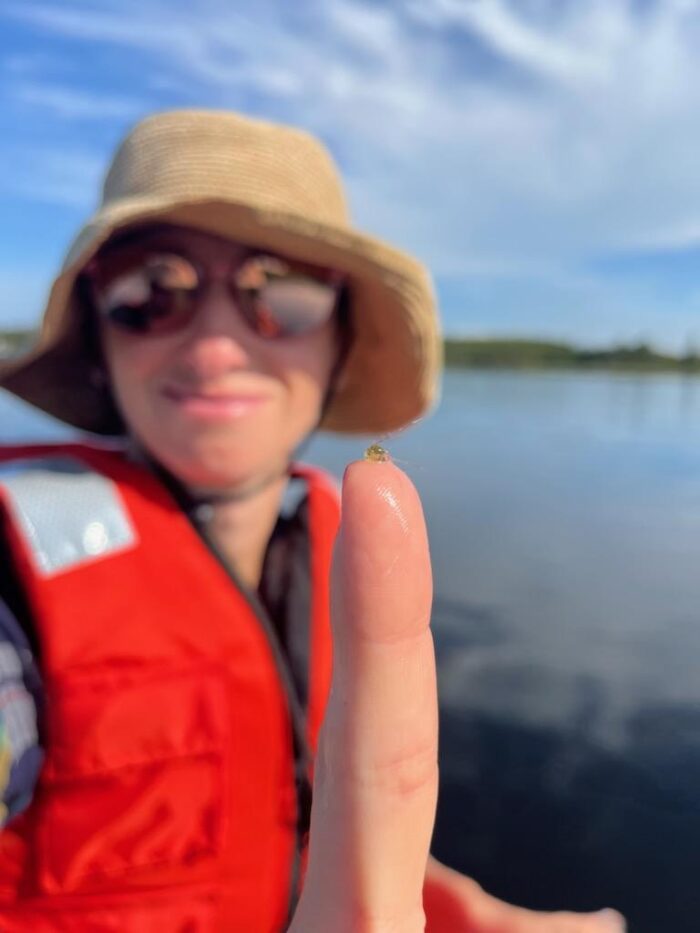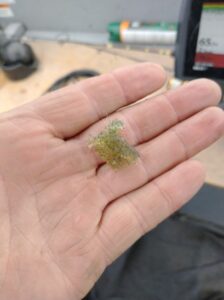Spiny waterflea continues to expand in Cook County lakes, recently discovered in Poplar Lake
The spiny waterflea, an invasive species, has been present in Cook County lakes for decades. Over the years, local, state, and federal officials have documented its spread, with the most recent detection in Poplar Lake, a popular recreation spot and Boundary Waters Canoe Area Wilderness access point along the Gunflint Trail.
During a recent temperature and dissolved oxygen profile test on Poplar Lake, U.S. Forest Service officials discovered the spiny waterflea species. It was the first time the species had been documented in Poplar Lake.
The small crustacean has a small body with a long spiny tail, hence the name, spiny waterflea. It lives in open water and various levels within the water column. Adults range from 1/4 to 5/8 inches long and are generally opaque in color.
Once introduced to a lake, the spiny waterflea feeds on daphnia, the native zooplankton in northern Minnesota lakes. Daphnia is an essential source of food for native fish species. Amanda Weberg, the Cook County aquatic invasive species program supervisor, said that native fish, such as walleye and lake trout, do not tend to eat spiny waterfleas.
Furthermore, Weberg said, Daphnia’s primary food source is algae, and with fewer Daphnia, “there’ll be more algae blooms.”
The spiny waterflea originates from Europe and Asia, and in the 1970s and 1980s, it is suspected to have made its way to the Great Lakes through the use of ballast tanks on freighter ships. The invasive species was officially detected in Lake Superior in 1995 and has since spread to inland lakes throughout Minnesota and neighboring states.
Other lakes in Cook County that have documented spiny waterflea populations are Devil’s Track, McFarland, Saganaga, Greenwood, Gunflint, Flour, and numerous BWCAW lakes. While spiny waterflea may be transferred from lake to lake by boat or canoe, it is more commonly transferred by fishing line, Weberg said.
To prevent the spread, Weberg recommended anglers wipe their fishing lines with a cloth to remove possible spiny waterfleas before fishing a different lake.
WTIP’s Kalli Hawkins spoke with Amanda Weberg, the Cook County Aquatic Invasive Species program supervisor, about the discovery of spiny waterflea in Poplar Lake, the ecological impacts of the species, how to prevent the spread, and more. The audio from the interview is below.















